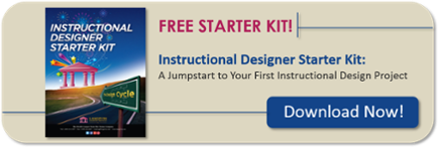
Photo by: Gerd Altmann via Pixabay
Setting your learners up for success drives many of the decisions you make as an instructional designer. But, designing your “performance tests” is probably one of the last things you design before you start developing your product.
What if the first thing you designed was the test? When I say, “performance-based test,” I’m referring to practice exercises, simulations, case studies, and role-plays.
Here’s a procedure I advocate instructional designers follow to set learners up for success. It ensures you don’t leave the most important piece of design work until the eleventh hour.
1. Use the task analysis process to determine the step-by-step procedure that will become your task/objective.
2. Take the task and design a performance test that will test the entire task from beginning to end. Make sure you choose the method that best matches how the learners will apply their learning back at work. This will be your criterion test.
3. Now it’s time to design a relevant, interactive presentation that will deliver the “need to know” content to your learners.
This chart illustrates the most common performance tests used for each type of content and a presentation method that is likely to fit the content.
Designing in this order prevents those data dumps we’ve all experienced, keeping your presentations purposeful, lean, and designed to deliver the “need to know” content.
If you’re a new instructional designer, our Instructional Design for New Designers workshop is the perfect choice for you! It’s now available in two formats, in-person and live online. Enroll today to learn more tips and get hands-on practice that will set your learners up for success!
At what point in your design process do you tackle the design of performance-based tests? Do you have any best practices to share?

